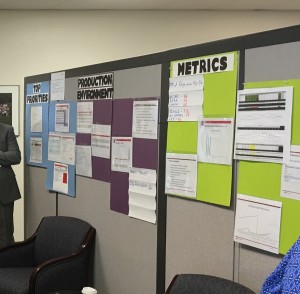In the current world of health care, most provider organizations are undertaking significant cost management efforts. Health care providers need to deliver care more cost effectively while improving  value. We are no exception.
value. We are no exception.
At University Hospitals we call it “Value Improvement Program” (VIP). At the University of Michigan Health System, we called it “Value and Margin Improvement” (VMI). I don’t remember what we called it at Brigham and Women’s Hospital, but it was similar.
Often it starts with the use of outside consultants. They identify the overall opportunity at a high level using the organization’s cost data and industry benchmarks. In some cases, consultants stay on and help staff the teams. In other cases, the organization staffs the teams internally to do a deeper dive, find the specific opportunities, and implement.
Depending on an organization’s executive leadership, culture, management and staff buy-in and their approach to system wide initiatives, results can vary greatly. Continue reading









